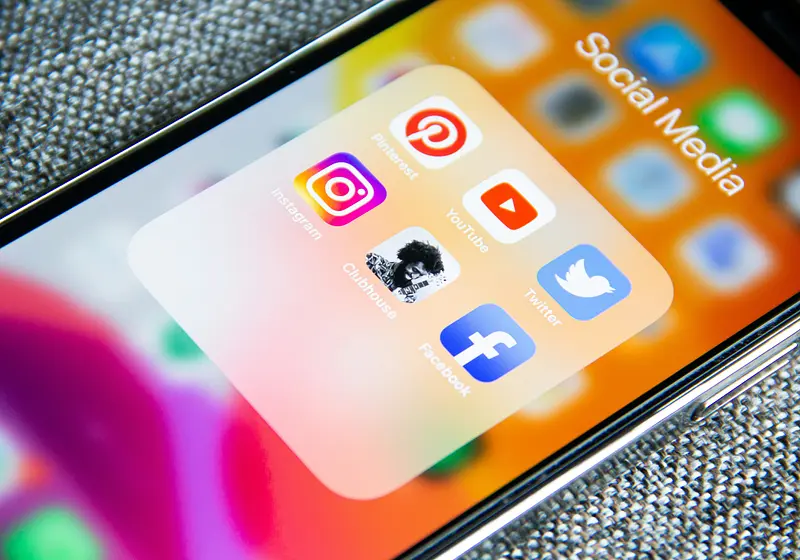Generation Z, growing up in a world of developing technology, has been consumed by social media. Viewing content on Snapchat, Instagram, TikTok, YouTube, and other platforms has become essential to most daily routines, not just those of Gen Zers. As a whole, members of society - naive to the dangers of social media - regularly reach for their phones to scroll mindlessly.
Since the early 2000s, social media's positive impact on society has become increasingly clear. It enables individuals worldwide to connect with just a click of a button, offering users the chance to encounter like-minded people they may have never met otherwise.
Even so, it is imperative not to overlook the apparent hazards the media poses. Its usage can be detrimental to users, generating addiction, privacy concerns, safety risks, and mental health issues.
Let us slide into your dms 🥰
Get notified of top trending articles like this one every week! (we won't spam you)Addiction
Individuals dedicate approximately 2 ½ hours daily to navigating various social media platforms, totaling 864 hours annually—equivalent to over a month's worth of time. This starkly contrasts with the recommended safe usage of just 30 minutes. The reason behind this significant investment of time at the potential cost of our well-being is straightforward: addiction.
The continuous influx of retweets, likes, and shares from these platforms triggers dopamine surges in the brain's reward area. While dopamine is a neurotransmitter associated with pleasure and reward, its excessive activation can lead to desensitization. Over time, the brain becomes less responsive to dopamine, requiring even more stimulation to achieve the same level of satisfaction. This elicits a chemical response comparable to that observed in activities like gambling and substance use.
This desensitization process, along with the ongoing exposure to this "syringe of poison," directly impacts the brain, potentially leading to a decline in cognitive performance. The brain's ability to focus, process information, and engage in critical thinking can be compromised.

Take the Quiz: Discover Your Ideal Stress-Relieving Hobby
Everyone deals with stress differently, and finding the right hobby can help you relax and unwind. Take this quiz to find out which stress-relievin...
Privacy Concerns
The social forum - a breeding ground for criminals - makes safeguarding privy information nearly impossible. This issue arises from the simple, uncomplicated nature of stealing one's personally identifiable information or PII. With access to a PII, scammers can effortlessly take control of an innocent individual's social media and financial accounts, impersonate them, and put their followers in peril.
Many hazards, the most common being data mining and breaches, third-party data sharing, privacy setting loopholes, and viruses, can place confidential information at risk. This can expose users to identity theft and financial fraud, allowing for great misuse of personal data.
For instance, many hackers typically run phishing attacks on platforms such as iMessage and WhatsApp to exploit over-trustful victims. Fraudsters also typically pretend to be recognizable senders or legitimate companies, duping their pawns into falling into their schemes' traps.
Unluckily, these strategies tend to work. "Nearly 33% of email and social media users" became a victim of "at least one cyber attack" in 2018, Branka Vuleta, author of "18 Chilling Privacy Statistics in 2023," attested. In other words, 1 out of 3 people had their constitutional right to privacy infringed upon, which should not be taken lightly. This invasive and vicious evil will only persist, as there aren't sufficient software and safety precautions that could prohibit it. Every second on the internet opens doors to a swimming pool of predators who are eager to pry.
Safety Risks
The inherent safety risks associated with social media platforms significantly contribute to their adverse effects on users. According to "Social Media Statistics," approximately 44% of individuals have experienced online harassment, including offensive name-calling, stalking, and physical threats.
The consequences of such actions extend beyond the digital realm. A threat can materialize in a matter of seconds, whether the person online knows the victim or not. If they do, they'll know where to find the person; if they don't, they can easily find out. After all, information is never truly secure once it is on "the cloud."
Online platforms also have an important role in [censored] crimes. In 26% of [censored] crimes against minors, offenders exploit the digital space to disseminate information and images about their victims. When such content leaks and viralizes, people across the globe can save it, edit it, share it, repost it, and more. This can attract malicious individuals, such as obsessive stalkers, certainly jeopardizing the victim's safety.
This issue is particularly distressing for the younger generation browsing the web. Nearly half of 8 to 13-year-olds use social media and gaming platforms to interact with strangers. The naivety and lack of awareness among children make them susceptible to exploitation and manipulation, increasing the likelihood of contact with fake identities or predatory individuals. We must prevent such helpless individuals from coming into contact with these threats.
Mental Health Issues
Interacting with unfamiliar individuals online carries a price, as it opens the door for anyone to share their hurtful sentiments through comments and messages. Not everyone possesses a resilient mindset, and receiving such messages can potentially shatter one's self-esteem and ego.
The profound consequences often manifest as mental and emotional anguish, particularly when individuals internalize the negativity directed at them. Unfortunately, over half of American adolescents have encountered online bullying or harassment firsthand. Coming face-to-face with disparaging remarks and online threats creates an ongoing cycle of stress, judgment, and insecurity.
Demeaning remarks may reinforce feelings of isolation and despair, driving people towards insanity. The emotional toll may result in severe outcomes, including anxiety, depression, and even self-harm.

Image Credit: cottonbro studio from Pexels
In essence, while the positive impact of social media in connecting individuals globally is undeniable, it is imperative to acknowledge the pervasive hazards associated with its use. The dark side of social media presents a multifaceted threat, encompassing addiction, privacy concerns, safety risks, and mental health issues.
In recognition of these effects, it is crucial for policymakers, tech companies, and society as a whole to collaboratively prioritize user well-being and work towards creating a safer and healthier digital environment.











